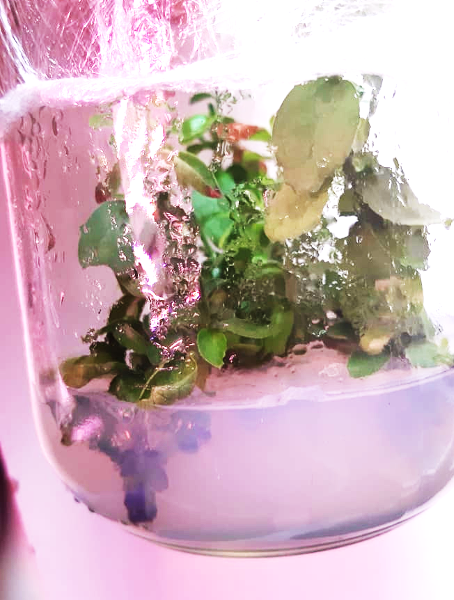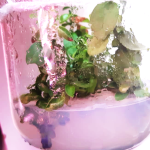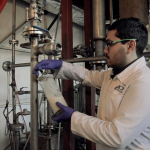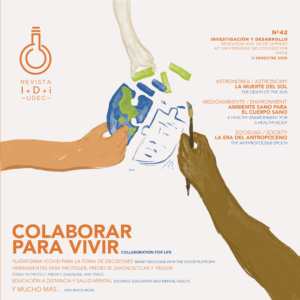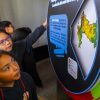By: Soledad Toledo Cabrera, Journalist VRID UdeC / lucabrer@udec.cl
Images: Courtesy of Dr. Rodrigo Hasbún
Leer en español
“The boldo is the most studied native species for medicinal purposes in Chile,” says Dr. Rodrigo Hasbún Zaror. This very slow-growing endemic tree of our country was already being used by humans almost 14,000 years ago, as evidenced by its discovery at the archaeological site of Monte Verde, near Puerto Montt. Its leaves, fruits, and bark have been used to treat gastric problems and other diseases. For this reason, science has become interested in its characteristics: “It has been studied to combat various diseases; the number of studies that have shown the positive effects of boldo and boldine, a fascinating compound, is enormous because it acts as an antioxidant,” he explains.
The leaves and bark that are sold today are collected from the sclerophyll forests of the south-central part of the country. But despite its proven benefits and export to Europe or countries such as Paraguay, Uruguay, Argentina, and Brazil, it is not widely grown. “There have been initiatives to grow boldo, but there isn’t a lot of incentive to do so,” explains the academic from the University of Concepción’s Forestry Department. Other species are more profitable and easier to grow: “The boldo seed is recalcitrant; it is not so simple to produce plants from seeds, and the germination rate is low,” says Dr. Hasbún, which also complicates the tasks of restoring these forests.
In general, boldo is sold to make infusions or to aromatize mate. But the herbal teas, including boldo and other herbs, have a problem: It cannot be determined how much of the beneficial compound is actually being consumed. “It may be a very low dose or, on the contrary, a very high one, and an overdose of any medicinal compound can lead to problems,” the academic mentions. In the case of boldine, in addition, although it is found in the leaves, its highest concentrations (up to 40 times more) are found in the tree’s bark.
That is why it is no surprise that Germany or the United States are interested in buying boldo bark. “There are countries that are extracting boldine and are already studying its use in medicines. But we can’t export bark in large quantities because that would mean destroying the few remaining trees, and it is not a tree that we can recover easily.”
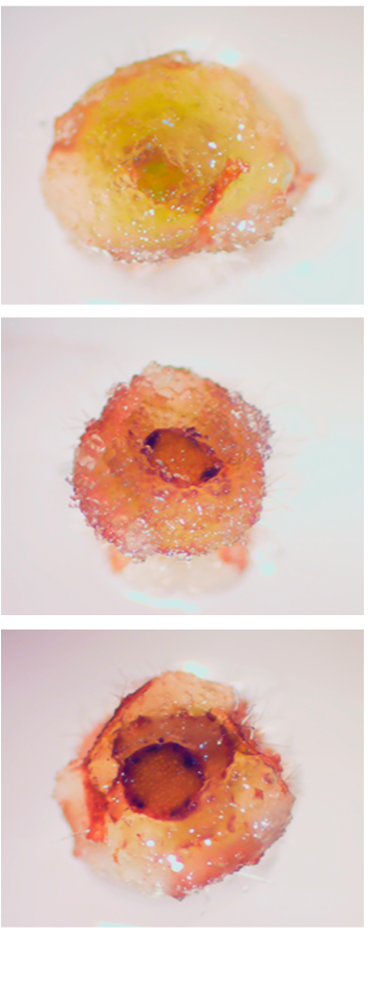
Biotechnology to the rescue
Faced with the growing interest in boldine and the need for a more sustainable use of boldo, Dr. Rodrigo Hasbún reports that in 2019, they began to work with the Forestry Institute (INFOR), represented by researcher Jorge González Campos, to grow Peumus boldus cells under in vitro conditions. This alliance paid off in 2023, when they managed to produce boldine using this method. “We believed that biotechnology could contribute to a more sustainable use of boldo and boldine production without affecting the native forest,” says Hasbún. Within the framework of a Fondef IDeA project, progress was made in establishing cell growth and the in vitro production of the compound. “This approach will make it possible to generate large numbers of boldo cells capable of synthesizing boldine, which makes it possible to scale up the process without the need to intervene in natural ecosystems,” he explains.
Since that first step, the team has continued to grow the cell lines in the Fondef project, which ended in January 2023. In parallel, new cell lines were generated as part of Natalia Avilés Kruuse’s doctoral thesis. These were taken to Spain for genomic characterization and a detailed study of the metabolic pathways involved in boldine synthesis. The idea is to move on to the next stage. “We want to move to its application, which is why we applied to a Fondef IT project. We have partnered with three companies in the cosmetic and food industry that work with boldo and boldine,” explains Hasbún. Since boldine is sensitive to environmental factors such as light and heat, they intend to use a previously developed technology to encapsulate and protect it.
And if we look at what is in the boldo’s genes?
“We have worked for a long time in genomics to find keys that help the conservation of species, genetic improvement, or the development of varieties,” says Dr. Hasbún. This work has been done using a small number of molecular markers. Whole genomes have been studied for about five years. This is more efficient because it provides access to all the information encoded in a species’ DNA. “To study boldo, I need a map, and the map is the genome.”
The researcher explains that the next challenge is to optimize the process. What does it take for each cell to produce a greater amount of boldine? “We need to know the whole biosynthetic pathway of boldine, what triggers its production, to understand why more boldine is produced in the bark and less in the leaves.” In this regard, Dr. Hasbún explains that one of the hypotheses is that boldine could be a UV protector. “The bark is exposed to a lot of radiation, maybe that’s why it accumulates there, but that hasn’t been proven. That’s part of what we want to discover, by analyzing the boldo genome,” he concludes.
Last modified: 3 de septiembre de 2025
